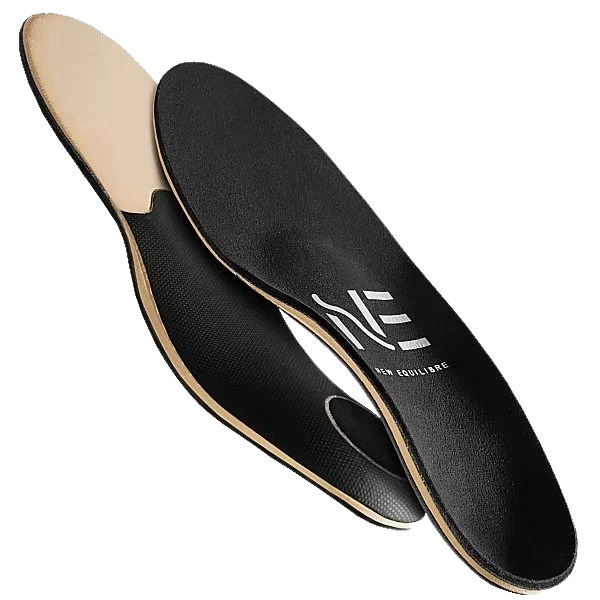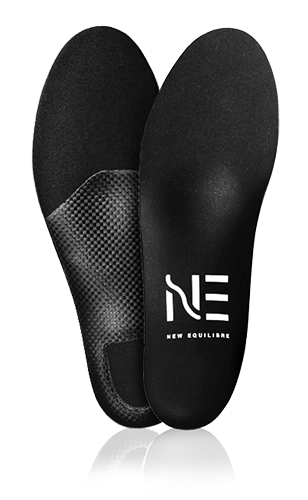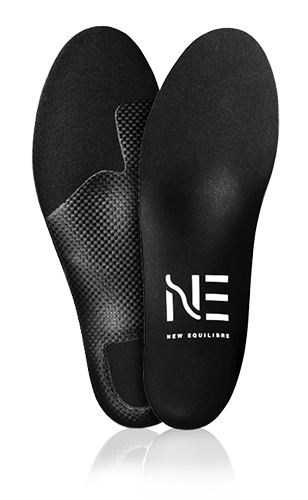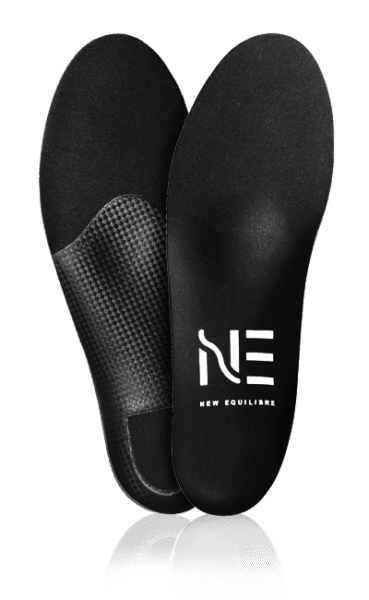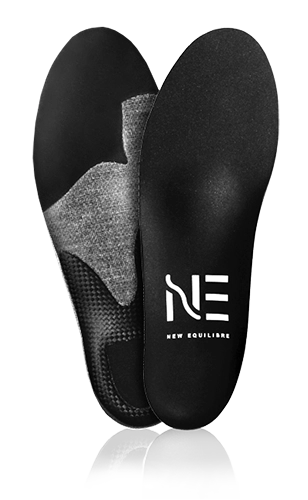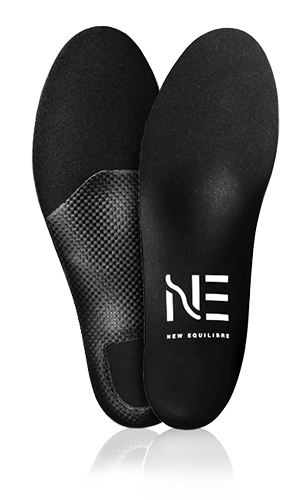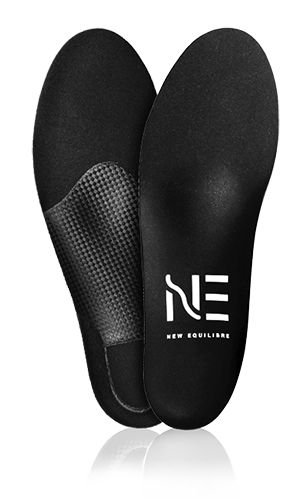Plantar aponeurosis
the complete guide
- Published on
- By New Equilibre
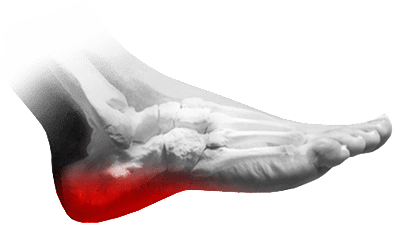
This pathology, characterized by pain in the heel and arch of the foot, can be caused by a variety of factors, including excess weight, overuse due to intense physical activity, unsuitable footwear, or a particular foot anatomy. Plantar fasciitis symptoms can be disabling, ranging from mild heel pain to intense, persistent pain that makes walking and daily activities difficult.
In this article, we'll look in detail at the various aspects of plantar fasciitis, from its causes and symptoms to its treatment options, including tips for prevention and pain management. We'll also discuss various non-surgical treatment methods, such as the use of orthopedic insoles, physical therapy, stretching exercises, and anti-inflammatories. Finally, we'll explore the surgical solutions available for the most severe cases.
Whether you've already experienced plantar fasciitis or simply want to know more about the condition, this guide is designed to provide you with all the information you need to understand, manage and effectively treat plantar fasciitis.
What is plantar aponeurosis?
Aponeurosis is pain resulting from trauma to the thick fibrous membrane known as the plantar aponeurosis: located on the underside of the foot, it extends from the heel to the base of the toes. Thanks to its rigidity, the plantar fascia acts as a support for the foot. It absorbs shocks as the foot rests on the ground, and then as it rolls off. On the other hand, its lack of elasticity makes it less resistant to repeated or unusual stress.
Aponeurosis mainly takes the form of acute or chronic stretching of the plantar aponeurosis, and more rarely its tearing. It should not be confused with plantar fasciitis which results from inflammation of the plantar fascia. In fact, plantar fasciitis is not an inflammation. It is mainly the result of micro-trauma caused by intense effort. That's why it's so common in sports activities requiring impulses or jumps. The pain can radiate from the arch of the foot to the heel, and is mainly felt in the morning, when getting up.
What are the symptoms of plantar aponeurosis?
Plantar aponeurosis causes heel pain. This pain is generally felt first thing in the morning, after getting out of bed. The pain may prevent the heel from touching the ground. They can become chronic if no treatment is started within 6 months of the onset of the first pains.
To diagnose aponeurosis, it is advisable to take an X-ray of the heel. This may reveal a thickening of the soft tissues in the heel area, as well as micro-calcifications. This examination can also rule out the presence of a tumour or fracture. For this reason, léchography is the most effective way of demonstrating thickening of the fascia. However, an MRI scan can provide a more precise diagnosis of the location.
What causes plantar aponeurosis?
A morphological cause. The wrong axis of the stride can lead to excessive stress on the fascia muscle.
Unsuitable sports practice. Running on ground that's too hard or degraded, or wearing unsuitable footwear, can lead to plantar fasciitis. Running with poor technique, downhill or on the forefoot is also a factor in plantar aponeuropathy. In some cases, a rupture of the plantar fascia can also occur.
How long does it take to heal plantar aponeurosis?
The healing time for plantar fasciitis varies considerably, depending on a number of factors. Generally, with effective treatment such as daily orthopedic insoles, pain can be relieved within a few days. However, with drug or physiotherapeutic treatments, most patients see a significant improvement in their symptoms within three to six months. In some cases, full recovery can take up to a year or more.
It is very important to note that healing is often gradual. Affected people generally begin to experience a reduction in pain before regaining full function of their foot. It is therefore essential to remain patient, to follow treatment rigorously and to wear orthopedic inserts on a daily basis.
Orthopedic insoles for plantar fasciitis :
The orthopedic insoles are the most effective and fastest treatment to relieve pain related to plantar fasciitis. Our New Equilibre insoles are designed to heal this condition effectively. Their thermoformed shape provides optimum support for your foot, supporting the medial, lateral and anterior plantar arches, helping to relieve inflammation quickly by limiting excessive tension and pressure. What's more, they're made from comfortable, high-end materials. Depending on your activity, whether sporty or not, you'll find different models of insoles in our online store.
New Equilibre insoles have been tested and approved by thousands of users. Their effectiveness is clinically proven. It's easy to order your insoles exclusively from our online store, and regain the comfort your feet deserve.
Free delivery to mainland France, within 2 working days. Free returns within 14 days*.
Plantar aponeurosis is a very common pathology in sports, so discover all the New Equilibre insoles adapted to your activity for optimal effectiveness:
How to treat plantar fasciitis?
Rest and Ice : Give your foot time to recover by avoiding activities that aggravate the pain. Apply ice to the painful area for 15 to 20 minutes several times a day to reduce inflammation.
Stretching: Gentle stretching of the plantar fascia and calf muscles can help improve flexibility and relieve tension. Perform these stretches regularly, especially in the morning.
Appropriate Shoes : Opt for shoes that offer good arch support and adequate cushioning. Orthopedic insoles can also help reduce pressure on the fascia.
Orthotics and Orthopedic Insoles : Orthopedic inserts to correct posture and weight distribution, relieving pressure on the fascia.
Physical therapy: A physiotherapist can guide you through specific exercises to strengthen foot muscles, improve mobility and promote healing.
Anti-inflammatories : Over-the-counter anti-inflammatory drugs can help reduce inflammation and ease pain.
Strapping : Special adhesive bandages can be used to support the plantar fascia and reduce tension during healing.
What kind of shoes can I wear with plantar fasciitis?
In general, it's important to choose comfortable shoes that offer good arch support, adequate cushioning and good stability to relieve plantar fasciitis symptoms. It is also advisable to avoid shoes that are too flat or have high heels, which can aggravate this condition.
Cushioned running shoes: Opt for running shoes specially designed to absorb shock and provide good support for the arch of the foot. Look for models with an EVA foam or gel midsole for extra cushioning.
Walking shoes : Choose walking shoes with good arch support and heel cushioning. Look for models with a thick, flexible outsole to reduce pressure on the plantar fascia.
Orthopedic shoes : If you suffer from severe plantar fasciitis, you may want to consider custom-made orthopedic shoes. These shoes are specially designed for your foot and can offer optimal support and pain relief.
Shoes with removable insoles : Opt for shoes with removable insoles so you can replace them with New Equilibre orthopedic insoles specially adapted to your activity to relieve plantar fasciitis.
Shoes with good arch support: Look for shoes that offer good arch support to reduce tension on the plantar fascia. Shoes with gel or memory foam inserts can be particularly beneficial.
Shoes with a slightly raised heel: Shoes with a slightly raised heel can help reduce tension on the plantar fascia by promoting a more neutral foot position.
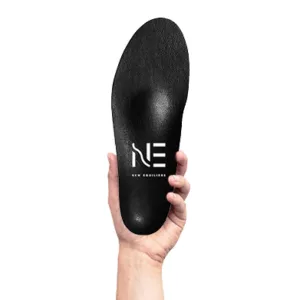
New Equilibre
Healthcare professionals specializing in the manufacture of orthopedic insoles for over 30 years. Clinically proven expertise with thousands of New Equilibre users and patients in orthopedic practices.


